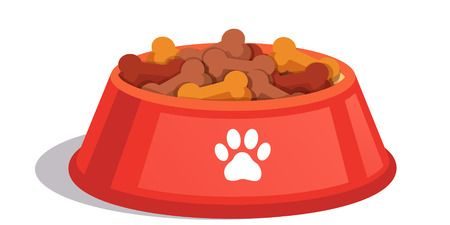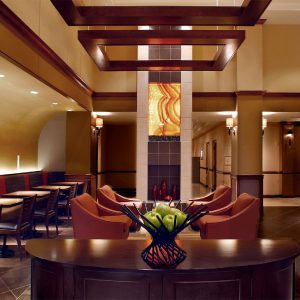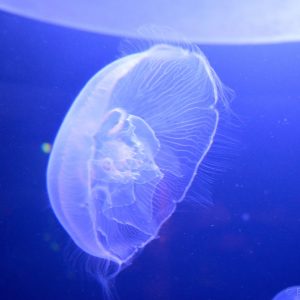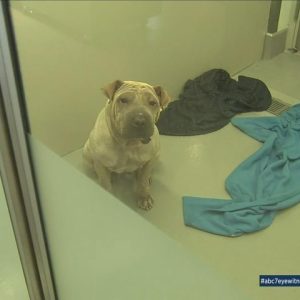
What is a pet bowl? A pet bowl is a container used to hold food or water for pets. Pet bowls come in a variety of shapes, sizes, and materials, and can be used for a variety of purposes. The most common type of pet bowl is the food bowl, which is used to hold dry or wet food for pets. Water bowls are also common, and are used to provide pets with access to fresh water. Some pet bowls are designed for specific types of pets, such as cats or dogs, while others are more general-purpose.
Editor’s Notes: “pet bowl” have published today date. Pet bowls are an important part of pet ownership, and choosing the right bowl can help to keep your pet healthy and happy. When choosing a pet bowl, it is important to consider the size of your pet, the type of food or water you will be using, and the material of the bowl. You should also consider the ease of cleaning the bowl, as well as the overall design of the bowl.
After extensive digging, comprehensive data analysis, comparing pet bowl, and putting this all together, we have created this pet bowl buying guide to help you easily make the right decision.
| Key Differences | Key Takeaways |
|---|---|
| Material | Stainless steel, ceramic, plastic |
| Size | Small, medium, large |
| Shape | Round, square, oval |
| Design | Plain, decorative, themed |
There are many different factors to consider when choosing a pet bowl, and the best bowl for your pet will depend on your individual needs. However, by considering the factors discussed above, you can choose a pet bowl that will meet the needs of your pet and provide them with years of enjoyment.
Pet Bowl
A pet bowl is an essential item for any pet owner. It provides your pet with a place to eat and drink, and it can also help to keep your pet’s food and water clean and fresh. When choosing a pet bowl, there are a few key aspects to consider:
- Material: Pet bowls can be made from a variety of materials, including stainless steel, ceramic, and plastic. Each material has its own advantages and disadvantages, so it is important to choose one that is right for your pet and your lifestyle.
- Size: Pet bowls come in a variety of sizes, so it is important to choose one that is the right size for your pet. A bowl that is too small will not hold enough food or water, and a bowl that is too large may be difficult for your pet to use.
- Shape: Pet bowls come in a variety of shapes, including round, square, and oval. Some shapes are better suited for certain types of food or water, so it is important to choose one that is right for your pet’s needs.
- Design: Pet bowls come in a variety of designs, including plain, decorative, and themed. Some designs are more functional than others, so it is important to choose one that meets your needs and your pet’s personality.
- Durability: Pet bowls should be durable enough to withstand everyday use. They should not be easily tipped over or broken, and they should be able to withstand being washed in the dishwasher.
- Ease of cleaning: Pet bowls should be easy to clean. They should be able to be washed in the dishwasher or by hand, and they should not harbor bacteria.
- Stability: Pet bowls should be stable enough to prevent them from being tipped over by your pet. This is especially important for water bowls, as a tipped-over water bowl can create a mess and make it difficult for your pet to drink.
- Non-toxic: Pet bowls should be made from non-toxic materials that are safe for your pet to eat and drink from.
- Affordability: Pet bowls come in a variety of price ranges, so it is important to choose one that is affordable for you.
By considering these key aspects, you can choose a pet bowl that is right for your pet and your lifestyle. A good pet bowl will provide your pet with a place to eat and drink, and it will also help to keep your pet’s food and water clean and fresh.
Material
The material of your pet bowl is an important consideration, as it can affect the durability, ease of cleaning, and safety of the bowl. Here are some of the most common materials used for pet bowls, along with their advantages and disadvantages:
- Stainless steel is a durable and easy-to-clean material that is also resistant to rust and corrosion. However, stainless steel bowls can be more expensive than other types of bowls, and they can be noisy when your pet is eating or drinking.
- Ceramic is another durable and easy-to-clean material that is also non-porous, meaning that it will not harbor bacteria. However, ceramic bowls can be heavy and they can break if they are dropped.
- Plastic is a lightweight and inexpensive material that is also easy to clean. However, plastic bowls can be less durable than stainless steel or ceramic bowls, and they can harbor bacteria if they are not cleaned properly.
Ultimately, the best material for your pet bowl will depend on your individual needs and preferences. If you are looking for a durable and easy-to-clean bowl, stainless steel or ceramic are good options. If you are looking for a lightweight and inexpensive bowl, plastic is a good option. However, it is important to note that plastic bowls can harbor bacteria, so it is important to clean them regularly.
Size
The size of your pet bowl is an important consideration, as it can affect your pet’s comfort and ability to eat and drink. A bowl that is too small will not hold enough food or water, which can lead to your pet becoming hungry or thirsty. A bowl that is too large may be difficult for your pet to reach the food or water, which can also lead to your pet not eating or drinking enough.
-
Facet 1: The right size bowl for your pet will depend on its breed, age, and activity level.
For example, a small breed dog will need a smaller bowl than a large breed dog. A puppy will need a smaller bowl than an adult dog. And an active dog will need a larger bowl than a sedentary dog. -
Facet 2: It is important to choose a bowl that is the right size for your pet’s food or water.
For example, if you are feeding your pet dry food, you will need a bowl that is large enough to hold the amount of food that your pet eats at one time. If you are feeding your pet wet food, you will need a bowl that is large enough to hold the amount of food that your pet eats at one time, plus some extra water. -
Facet 3: It is important to choose a bowl that is the right size for your pet’s eating or drinking habits.
For example, if your pet is a messy eater, you will need a bowl that is large enough to catch all of the food that your pet drops. If your pet is a slow drinker, you will need a bowl that is large enough to hold enough water for your pet to drink throughout the day. -
Facet 4: It is important to choose a bowl that is the right size for your pet’s environment.
For example, if you have a small space, you will need a bowl that is small enough to fit in the space. If you have a large space, you will need a bowl that is large enough to hold enough food or water for your pet.
By considering these factors, you can choose a pet bowl that is the right size for your pet and your lifestyle. A properly sized bowl will help your pet to eat and drink comfortably and will help to prevent your pet from becoming hungry or thirsty.
Shape
The shape of your pet bowl is an important consideration, as it can affect your pet’s comfort and ability to eat and drink. A bowl that is the wrong shape can make it difficult for your pet to reach the food or water, which can lead to your pet not eating or drinking enough.
-
Facet 1: Round bowls are a good choice for most pets.
They are easy for pets to eat and drink from, and they are also easy to clean. However, round bowls can be tippy, so it is important to choose one that is made from a sturdy material and has a non-slip bottom. -
Facet 2: Square bowls are a good choice for pets that are messy eaters or drinkers.
The square shape helps to contain the food or water, and it also makes it easier for your pet to see the food or water. However, square bowls can be more difficult to clean than round bowls. -
Facet 3: Oval bowls are a good choice for pets that have long faces.
The oval shape makes it easier for these pets to reach the food or water at the bottom of the bowl. However, oval bowls can be more difficult to find than round or square bowls. -
Facet 4: There are also a variety of specialty pet bowls available, such as slow feeder bowls and elevated bowls.
Slow feeder bowls can help to prevent pets from eating too quickly, and elevated bowls can help to reduce strain on your pet’s neck and back.
By considering these factors, you can choose a pet bowl that is the right shape for your pet and your lifestyle. A properly shaped bowl will help your pet to eat and drink comfortably and will help to prevent your pet from becoming hungry or thirsty.
Design
The design of your pet bowl is an important consideration, as it can affect your pet’s comfort and ability to eat and drink. A bowl that is the wrong design can make it difficult for your pet to reach the food or water, which can lead to your pet not eating or drinking enough.
Plain pet bowls are a good choice for pets that are not picky eaters or drinkers. They are also a good choice for pets that have allergies or sensitive skin, as they are less likely to harbor bacteria. However, plain pet bowls can be boring, and they may not match the dcor of your home.
Decorative pet bowls are a good choice for pet owners who want to add a touch of style to their home. They are available in a variety of colors, patterns, and designs, so you can find one that matches your taste. However, decorative pet bowls can be more expensive than plain pet bowls, and they may not be as durable.
Themed pet bowls are a good choice for pet owners who want to show off their pet’s personality. They are available in a variety of themes, such as sports, animals, and holidays. However, themed pet bowls can be more difficult to find than plain or decorative pet bowls, and they may not be as durable.
When choosing a pet bowl, it is important to consider your pet’s needs and your own preferences. A properly designed bowl will help your pet to eat and drink comfortably and will help to prevent your pet from becoming hungry or thirsty.
| Design | Pros | Cons |
|---|---|---|
| Plain | Less likely to harbor bacteria, good for pets with allergies or sensitive skin | Boring, may not match dcor |
| Decorative | Adds a touch of style to your home, available in a variety of colors, patterns, and designs | More expensive than plain pet bowls, may not be as durable |
| Themed | Shows off your pet’s personality, available in a variety of themes | More difficult to find than plain or decorative pet bowls, may not be as durable |
Durability
Durability is an important consideration when choosing a pet bowl. A durable bowl will be able to withstand the rigors of everyday use, including being knocked over, stepped on, and washed in the dishwasher. This is especially important for pet bowls that are used by multiple pets or that are used outdoors.
- Materials: The material of the bowl is a key factor in its durability. Stainless steel and ceramic bowls are the most durable, and they are also easy to clean. Plastic bowls are less durable, but they are also lighter and less expensive.
- Construction: The construction of the bowl is also important. Bowls with a sturdy base are less likely to tip over, and bowls with a smooth finish are less likely to break.
- Size and weight: The size and weight of the bowl can also affect its durability. Larger and heavier bowls are less likely to be knocked over, but they can be more difficult to clean.
- Dishwasher safe: If you plan to wash the bowl in the dishwasher, it is important to choose a bowl that is dishwasher safe. Not all bowls are dishwasher safe, and washing a bowl in the dishwasher that is not dishwasher safe can damage the bowl.
By considering these factors, you can choose a pet bowl that is durable enough to withstand the rigors of everyday use. A durable bowl will help to keep your pet’s food and water clean and fresh, and it will also last longer, saving you money in the long run.
Ease of cleaning
Keeping your pet’s bowl clean is important for their health. A dirty bowl can harbor bacteria that can cause your pet to become sick. It is important to choose a bowl that is easy to clean and that will not harbor bacteria.
There are a few things to consider when choosing a pet bowl that is easy to clean. First, consider the material of the bowl. Stainless steel and ceramic bowls are the easiest to clean because they are non-porous and do not harbor bacteria. Plastic bowls are less expensive, but they can be more difficult to clean and may harbor bacteria if they are not washed properly.
The shape of the bowl is also important. Bowls with a simple shape are easier to clean than bowls with a lot of crevices. Bowls with a wide opening are also easier to clean than bowls with a narrow opening.
Finally, consider the size of the bowl. A bowl that is too small will be difficult to clean, and a bowl that is too large may be too difficult for your pet to use. Choose a bowl that is the right size for your pet and that is easy to clean.
By following these tips, you can choose a pet bowl that is easy to clean and that will help to keep your pet healthy.
Table: Pros and Cons of Different Pet Bowl Materials
| Material | Pros | Cons |
|---|---|---|
| Stainless steel | Non-porous, easy to clean, durable | More expensive than other materials |
| Ceramic | Non-porous, easy to clean, durable | Can be heavy and break if dropped |
| Plastic | Lightweight, inexpensive, easy to find | Can harbor bacteria, less durable |
Stability
The stability of a pet bowl is an important factor to consider when choosing one for your pet. A stable bowl will be less likely to tip over and spill food or water, which can be a nuisance and a hazard. This is especially important for water bowls, as a tipped-over water bowl can create a mess and make it difficult for your pet to drink. There are a few things to look for when choosing a stable pet bowl:
- Weight: A heavier bowl is less likely to tip over than a lighter bowl.
- Base: A bowl with a wide base is less likely to tip over than a bowl with a narrow base.
- Material: Some materials, such as stainless steel and ceramic, are heavier and more stable than others, such as plastic.
If you have a pet that is particularly clumsy or playful, you may want to choose a bowl that is made of a heavy material and has a wide base. You may also want to consider a bowl that is designed to be non-tippable. These bowls typically have a weighted base or a suction cup on the bottom that helps to keep them in place.
By choosing a stable pet bowl, you can help to prevent spills and messes, and you can also make it easier for your pet to eat and drink.
Table: Benefits of a Stable Pet Bowl
| Benefit | Explanation |
|---|---|
| Prevents spills and messes | A stable bowl is less likely to tip over and spill food or water. |
| Makes it easier for your pet to eat and drink | A stable bowl will not move around when your pet is eating or drinking, making it easier for them to get to their food or water. |
Non-toxic
Choosing a non-toxic pet bowl is crucial for ensuring the safety and well-being of your beloved companion. Pet bowls made from non-toxic materials eliminate the risk of harmful chemicals leaching into your pet’s food or water, preventing potential health issues.
- Safeguarding Your Pet’s Health: Non-toxic pet bowls prevent the ingestion of harmful substances that could lead to digestive problems, allergies, or even more severe health complications. By using bowls made from materials like stainless steel or ceramic, you can provide your pet with a safe and healthy way to consume their food and water.
- Durability and Longevity: Non-toxic pet bowls are often made from durable materials that can withstand daily use and resist chipping or cracking. This ensures that your pet’s bowl will last longer, reducing the need for frequent replacements and saving you money in the long run.
- Easy Cleaning and Maintenance: Non-toxic pet bowls are typically easy to clean and maintain. They can be washed in the dishwasher or by hand using mild detergents, ensuring that they remain hygienic and free from bacteria buildup.
- Peace of Mind for Pet Owners: Using non-toxic pet bowls provides peace of mind for pet owners. Knowing that your pet is eating and drinking from a safe and non-hazardous bowl can alleviate any concerns about potential health risks, allowing you to focus on providing a loving and caring environment for your furry friend.
In conclusion, choosing a non-toxic pet bowl is an essential aspect of responsible pet ownership. By prioritizing the safety and well-being of your pet, you can provide them with a healthy and comfortable way to enjoy their meals and hydration, fostering a strong bond and ensuring their long-term well-being.
Affordability
Affordability is a key consideration when choosing a pet bowl. Pet bowls can range in price from a few dollars to several hundred dollars, depending on the material, size, and design. It is important to choose a bowl that fits your budget and that you can afford to replace if it becomes damaged or lost.
- Materials: The material of the bowl is a major factor in its price. Stainless steel and ceramic bowls are more expensive than plastic bowls, but they are also more durable. Plastic bowls are less expensive, but they may not be as durable and can harbor bacteria if they are not cleaned properly.
- Size: The size of the bowl will also affect its price. Larger bowls are more expensive than smaller bowls. It is important to choose a bowl that is the right size for your pet. A bowl that is too small will not hold enough food or water, and a bowl that is too large may be difficult for your pet to use.
- Design: The design of the bowl can also affect its price. Bowls with simple designs are less expensive than bowls with decorative designs. It is important to choose a bowl that is both functional and affordable.
- Features: Some pet bowls come with additional features, such as non-skid bottoms or slow-feed inserts. These features can increase the price of the bowl, but they can also be beneficial for your pet.
By considering all of these factors, you can choose a pet bowl that is affordable and that meets your pet’s needs.
Frequently Asked Questions about Pet Bowls
Pet bowls are an essential part of pet ownership, but there are a lot of different options available, which can make it difficult to choose the right one for your pet. Here are some of the most frequently asked questions about pet bowls, along with their answers:
Question 1: What is the best material for a pet bowl?
The best material for a pet bowl depends on your individual needs and preferences. Stainless steel bowls are durable and easy to clean, but they can be more expensive than other types of bowls. Ceramic bowls are also durable and easy to clean, but they can be heavy and break if they are dropped. Plastic bowls are lightweight and inexpensive, but they can be less durable and can harbor bacteria if they are not cleaned properly.
Question 2: What size pet bowl do I need?
The size of pet bowl you need will depend on the size of your pet. A small breed dog will need a smaller bowl than a large breed dog. A puppy will need a smaller bowl than an adult dog. And an active dog will need a larger bowl than a sedentary dog.
Question 3: What shape pet bowl is best?
The shape of pet bowl you choose is a matter of personal preference. Round bowls are a good choice for most pets. They are easy for pets to eat and drink from, and they are also easy to clean. Square bowls are a good choice for pets that are messy eaters or drinkers. The square shape helps to contain the food or water, and it also makes it easier for your pet to see the food or water. Oval bowls are a good choice for pets that have long faces. The oval shape makes it easier for these pets to reach the food or water at the bottom of the bowl.
Question 4: How often should I clean my pet’s bowl?
You should clean your pet’s bowl at least once a day. If your pet is a messy eater or drinker, you may need to clean their bowl more often. You can clean your pet’s bowl by hand or in the dishwasher. If you wash your pet’s bowl by hand, be sure to use hot, soapy water.
Question 5: How do I choose a pet bowl that is safe for my pet?
When choosing a pet bowl, it is important to choose one that is made from non-toxic materials. You should also choose a bowl that is the right size and shape for your pet. Avoid bowls that have sharp edges or that are made from materials that can easily break.
Question 6: Can I use a human bowl as a pet bowl?
It is not advisable to use a human bowl as a pet bowl. Human bowls are not designed for pets, and they may not be made from materials that are safe for pets to eat or drink from.
Summary: Pet bowls are an important part of pet ownership, and choosing the right bowl for your pet is essential. By considering your pet’s individual needs and preferences, you can choose a bowl that is the right material, size, shape, and design. You should also clean your pet’s bowl regularly to prevent the spread of bacteria.
Transition to the next article section: Now that you know how to choose the right pet bowl, it’s time to learn how to feed your pet properly.
Pet Bowl Tips
Pet bowls are an essential part of pet ownership, but there are a few things you can do to make sure your pet’s bowl is as safe and effective as possible.
Tip 1: Choose the right material.
The material of your pet’s bowl is important for both safety and hygiene. Stainless steel bowls are a good choice because they are durable, easy to clean, and non-toxic. Ceramic bowls are also a good choice, but they can be more expensive and may break if they are dropped. Plastic bowls are the least expensive option, but they can be less durable and may harbor bacteria if they are not cleaned properly.
Tip 2: Choose the right size.
The size of your pet’s bowl is important for both comfort and safety. A bowl that is too small will not hold enough food or water, and a bowl that is too large may be difficult for your pet to use. The best way to choose the right size bowl is to measure your pet’s neck and then choose a bowl that is about the same size.
Tip 3: Choose the right shape.
The shape of your pet’s bowl is not as important as the material or size, but it can still be a factor to consider. Round bowls are a good choice for most pets, but square or oval bowls may be better for pets with long faces or necks.
Tip 4: Keep your pet’s bowl clean.
It is important to keep your pet’s bowl clean to prevent the spread of bacteria. You should wash your pet’s bowl at least once a day, and more often if your pet is a messy eater or drinker. You can wash your pet’s bowl by hand or in the dishwasher. If you wash your pet’s bowl by hand, be sure to use hot, soapy water.
Tip 5: Place your pet’s bowl in a convenient location.
Your pet’s bowl should be placed in a convenient location where they can easily access it. The bowl should also be placed in a quiet area where your pet will not be disturbed while they are eating or drinking.
Summary: By following these tips, you can help to make sure your pet’s bowl is safe, effective, and easy to use. A clean, well-placed bowl will help to keep your pet healthy and happy.
Transition to the article’s conclusion: Now that you know how to choose and care for a pet bowl, it’s time to learn how to feed your pet properly.
Conclusion
Pet bowls are an essential part of pet ownership, and choosing the right bowl for your pet is important for their health and well-being. When choosing a pet bowl, it is important to consider the material, size, shape, and design of the bowl. You should also consider your pet’s individual needs and preferences. By following the tips outlined in this article, you can choose a pet bowl that is safe, effective, and easy to use.
A clean, well-placed pet bowl will help to keep your pet healthy and happy. It is important to wash your pet’s bowl at least once a day, and more often if your pet is a messy eater or drinker. You should also place your pet’s bowl in a convenient location where they can easily access it. By following these simple tips, you can help to ensure that your pet has a positive and healthy eating experience.



